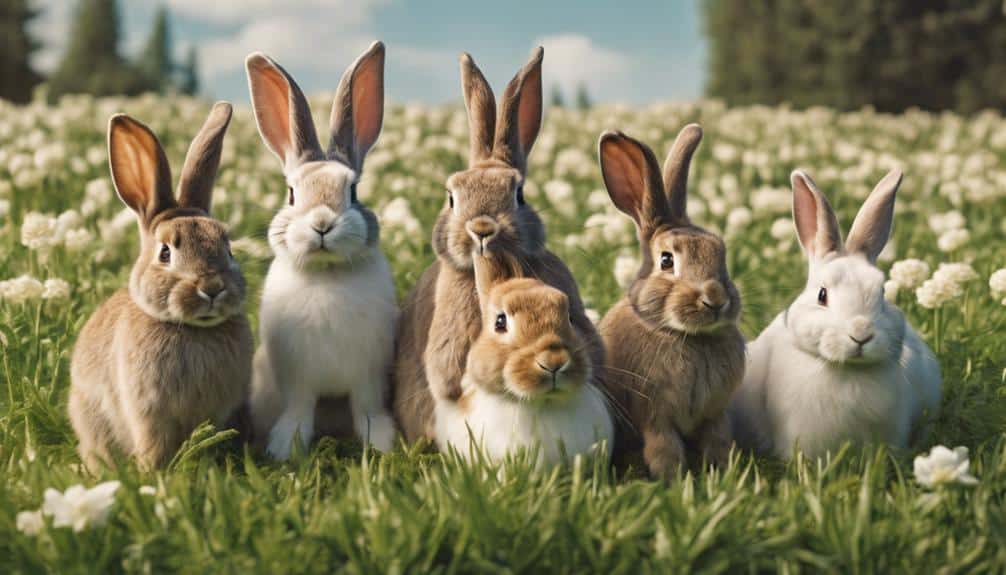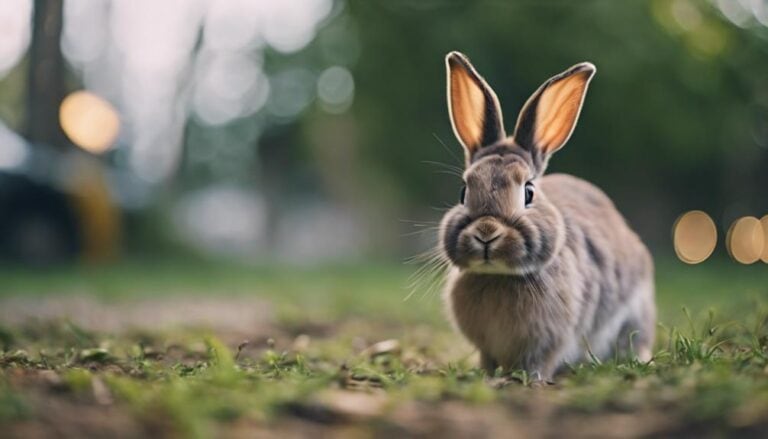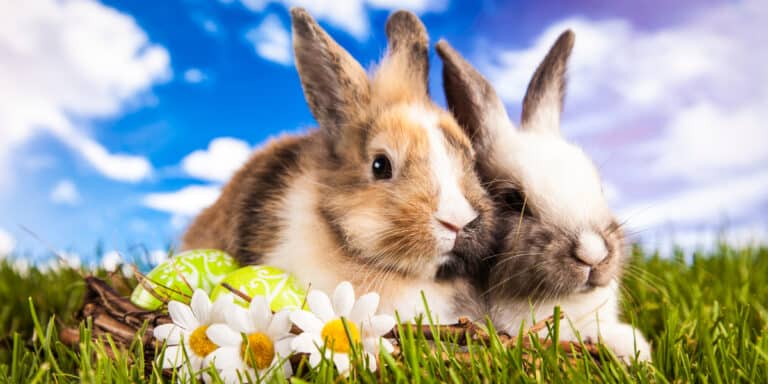As you observe a group of bunnies, you'll notice intricate dynamics at play, each member vying for a position within the established hierarchy. Understanding how these roles are determined and maintained can offer insights into the complexities of bunny social structures.
By exploring dominance behaviors, communication methods, and conflict resolution strategies among bunnies, you'll gain a deeper appreciation for the subtle yet impactful interactions that shape their group dynamics.
Stay tuned as we uncover the intriguing world of bunny group hierarchies and the roles each bunny plays within these intricate systems.
Contents
- 1 Key Takeaways
- 2 Social Hierarchies in Bunny Groups
- 3 Dominance Behavior Among Bunnies
- 4 Communication Methods in Bunny Groups
- 5 Establishing Alpha Bunny in Group
- 6 Submission Behaviors in Bunny Groups
- 7 Conflict Resolution Among Bunnies
- 8 Impact of Group Size on Hierarchy
- 9 Long-Term Effects of Hierarchy in Groups
- 10 Frequently Asked Questions
- 11 What Role Does Hierarchy Play in the Social World of Bunnies?
- 12 Conclusion
Key Takeaways
- Dominant rabbits establish hierarchy through confident body language and assertive behaviors.
- Aggressive interactions among same-age rabbits shape hierarchies and influence group dynamics.
- Dominance behaviors like mounting and grooming are crucial for hierarchy establishment and peace.
- Hierarchy dictates resource access, impacts social interactions, and maintains order within the group.
Social Hierarchies in Bunny Groups

In bunny groups, social hierarchies play a pivotal role in maintaining order and allocating resources efficiently. Dominant rabbits establish their position through confident body language and submissive behaviors, which helps in fostering peace within the group. Aggressive interactions, particularly in high-density environments, among same-age rabbits are instrumental in forming these hierarchies.
The hierarchical steepness, or how quickly dominance is established within the group, can impact the frequency of aggressive interactions and wound count. This hierarchy dictates access to resources and influences the overall dynamics within the group.
Dominance Behavior Among Bunnies
Observing dominance behavior among bunnies reveals a complex interplay of mounting, grooming, chasing, and nipping to establish hierarchy within the group. Rabbits display dominance behaviors to establish a clear social structure and maintain peace within their social groups. These behaviors, such as mounting and nipping, serve as communication tools that help in resource allocation and decision-making within the group.
Aggression is often seen during interactions where dominance hierarchy is being established. Dominant rabbits exhibit assertive behaviors to showcase their leadership position. Understanding these social behaviors is important in identifying the leader and interacting appropriately within the group dynamics. Different levels of dominance display can be identified through the intensity and frequency of these behaviors.
Communication Methods in Bunny Groups

Rabbits in groups rely heavily on non-verbal cues such as body language and scent marking to communicate effectively. These cues serve as crucial tools for establishing social hierarchies and maintaining group dynamics.
Understanding the nuances of these communication methods is essential for interpreting the intricate relationships within bunny groups.
Non-Verbal Cues
Within bunny groups, non-verbal cues play an essential role in establishing and maintaining hierarchical relationships among members. Dominant rabbits assert their position through body language like circling and nudging, while subordinate rabbits display submissive postures such as avoiding eye contact and crouching.
Non-verbal communication, including grooming and mounting, helps in understanding the dynamics within the group. By observing these cues, you can decipher the hierarchy, recognize dominance and submission, and comprehend the overall group dynamics.
Paying attention to these subtle signals is vital for ensuring harmony and order within the bunny group. Understanding and interpreting these non-verbal cues will enable you to assist in maintaining a peaceful and structured environment for the rabbits under your care.
Scent Marking
Scent marking in bunny groups serves as a fundamental method for establishing territorial boundaries and communicating identity among members. Rabbits utilize scent glands under their chins, on their cheeks, and around their anogenital region to mark objects and individuals.
This method aids in exploring the environment, identifying group members, and conveying information about reproductive status. Dominant rabbits often engage in more frequent marking to assert their position and uphold the hierarchy within the group.
Through scent marking, social dynamics are shaped by the transmission of details regarding dominance, reproductive readiness, and territorial limits among rabbits. By interpreting these olfactory signals, rabbits maintain order, establish roles, and reinforce the structure of their group.
Establishing Alpha Bunny in Group
When establishing the alpha bunny in a group, observe closely as dominant behaviors like mounting and nipping come into play, showcasing the hierarchy's formation.
The confident body language and control over resources displayed by the alpha bunny are essential for maintaining group order and structure.
Understanding these dominance dynamics is vital for promoting harmony and ensuring smooth interactions within the rabbit group.
Alpha Bunny Importance
Establishing an alpha bunny in a group significantly influences the dynamics and hierarchy among rabbits, shaping interactions and resource distribution. Alpha bunnies play a pivotal role in maintaining order within the social structure by displaying dominant behaviors like mounting, grooming, and territorial marking. Through confident body language and assertive actions, the alpha bunny establishes its position, ensuring priority access to essential resources and mates. Understanding the significance of the alpha bunny in the group dynamics helps in managing social interactions effectively, contributing to a harmonious environment where each bunny knows its place.
- Alpha bunnies maintain order and structure within the rabbit hierarchy.
- Dominant behaviors like grooming and territorial marking establish their position.
- They have priority access to resources and mates, shaping group dynamics.
Establishing Dominance Behavior
With dominance behaviors such as mounting, grooming, chasing, and nipping, rabbits establish a clear hierarchy within their group, ensuring resource allocation and peace maintenance. The social structure among rabbits relies heavily on these behaviors to determine the alpha bunny, the most dominant individual in the group.
It's fascinating to observe how aggressive behavior, like nipping and chasing, plays a pivotal role in the bonding process and the establishment of a structured hierarchy. Through submissive behavior such as grooming and avoiding direct eye contact, rabbits communicate their acceptance of the dominant rabbit's authority.
Recognizing these dominance behaviors is key to understanding the intricate group dynamics at play and fostering a harmonious environment within the rabbit group.
Maintaining Group Harmony
To maintain group harmony and establish the alpha bunny in a rabbit group, dominant behaviors like mounting, grooming, and territorial displays play important roles in ensuring resource allocation and order within the hierarchy. Understanding hierarchy dynamics aids in identifying the leader and interacting appropriately within the group.
Aggressive behaviors such as chasing, nipping, and fur pulling help establish and reinforce the alpha position. Maintaining a clear hierarchy contributes to group stability, resource access, and the overall well-being of the rabbits.
Submission Behaviors in Bunny Groups
Submission behaviors in bunny groups manifest in various ways, such as avoiding direct eye contact to display deference towards dominant individuals. Lower-ranking rabbits often exhibit submissive behaviors like grooming or nuzzling dominant rabbits as a way to show respect and submission within the social hierarchy. These submissive rabbits display passive body language, such as crouching or lying flat, indicating their acknowledgment of the dominant rabbits' importance.
Conflict avoidance and yielding of resources are common in bunny groups, where submissive behaviors help maintain peace and order by recognizing the dominant rabbits' significance. By adhering to these submission behaviors, lower-ranking rabbits contribute to the overall harmony of the group dynamics and the stability of the dominance hierarchy.
Understanding and respecting these submissive cues are crucial for the smooth functioning of bunny groups, ensuring that each member's role is clear and conflicts are minimized.
Conflict Resolution Among Bunnies

Conflict resolution among bunnies involves a complex interplay of hierarchical dominance behaviors like mounting, chasing, and nipping to establish and maintain social order within the group. Aggressive behavior is a common aspect during the negotiation of social rank, where dominant rabbits assert their position through displays of dominance.
Vital behaviors such as grooming rituals are essential in de-escalating conflicts and maintaining the group's hierarchy. Understanding the dynamics of dominance hierarchies helps in preventing escalated conflicts, contributing to overall group stability.
Priority access to resources by dominant rabbits influences conflict resolution and social interactions within the group, highlighting the significance of hierarchy establishment for resource distribution. By recognizing and respecting the social rank within the group, bunnies can navigate conflicts more effectively, ensuring a harmonious coexistence.
Impact of Group Size on Hierarchy
Considering the intricate dynamics of dominance and conflict resolution among bunnies, the impact of group size on hierarchy reveals significant insights into the social structures within rabbit communities. In groups, the size plays a pivotal role in shaping the dominance relationships among rabbits. Larger groups often display a more defined hierarchy with clear rank structures, where dominant individuals exhibit pronounced behaviors to assert their authority.
On the other hand, smaller groups may experience less stable hierarchies, characterized by frequent shifts in dominance as individuals vie for higher positions. The number of rabbits in a group directly influences the intensity and frequency of aggressive interactions related to hierarchy, affecting the overall social dynamics and stability within the community.
Understanding how group size influences hierarchy is essential for managing aggressive behavior and ensuring the welfare of all rabbits in the group. By recognizing these patterns, caretakers can better support harmonious interactions and maintain a balanced rank structure among the rabbits.
Long-Term Effects of Hierarchy in Groups
The enduring impact of hierarchy within rabbit groups extends far beyond immediate social interactions, shaping various aspects of individual well-being and resource allocation over time. Social hierarchy influences dominance relations, aggressive behavior, and group stability, ultimately impacting resource access and individual success.
Dominant rabbits often enjoy better mating opportunities, leading to a cycle of dominance, while subordinates may experience social exclusion, hindering their overall well-being. The stress levels induced by hierarchy dynamics can greatly affect the health and welfare of rabbits, highlighting the importance of understanding and managing these relationships.
Frequently Asked Questions
How Do Rabbits Establish Dominance?
Rabbits establish dominance through assertive behaviors like mounting, grooming, circling, and nipping. Aggressive actions help in resource allocation and group harmony. Dominant traits are displayed through confident body language, ensuring order, and resolving hierarchy conflicts.
What Is a Rabbit Bonding Hierarchy?
In a rabbit bonding hierarchy, social interactions determine leadership roles. Dominance displays like grooming and chasing establish pecking order. Aggression levels and submission signals shape hierarchical structures. Communication cues aid in maintaining group dynamics and peace.
Do Rabbits Live in a Hierarchy?
Yes, rabbits live in a hierarchy. Social interactions among them involve power struggles, communication signals, dominant behaviors, and submissive postures. Aggressive interactions, territorial disputes, and social grooming are key in establishing and maintaining their social hierarchy.
Can Rabbit Hierarchy Change?
Yes, rabbit hierarchy can change due to various factors like social behavior, leadership roles, and dominant traits. Observing group interactions reveals shifting dynamics, power struggles, and hierarchical shifts that impact social structures and group cohesion.
What Role Does Hierarchy Play in the Social World of Bunnies?
In the social world of bunnies, hierarchy plays a crucial role in maintaining order and structure within their groups. This intriguing social behavior of bunnies helps to establish dominance, reduce conflict, and ensure all members know their place in the group. Hierarchy is key to the stability of bunny communities.
Conclusion
In observing a bunny group, you notice a young male attempting to challenge the dominant buck. Despite his persistence, the dominant buck calmly asserts his authority through subtle body language and vocal cues, maintaining peace within the group.
This interaction highlights the importance of respect and submission in maintaining a stable hierarchy. Through clear communication and understanding of dominance behaviors, the group can function harmoniously, ensuring the well-being of all members.






